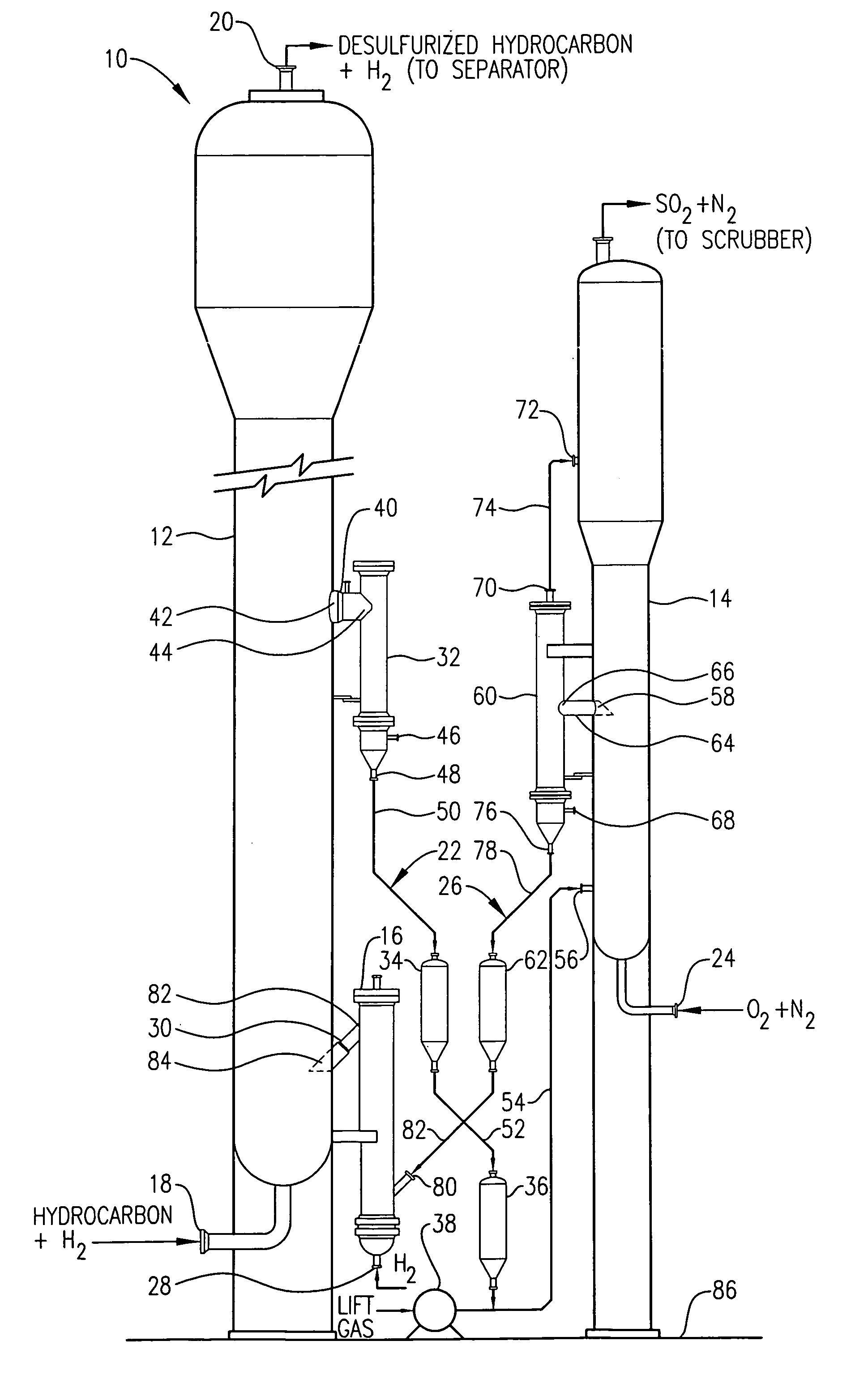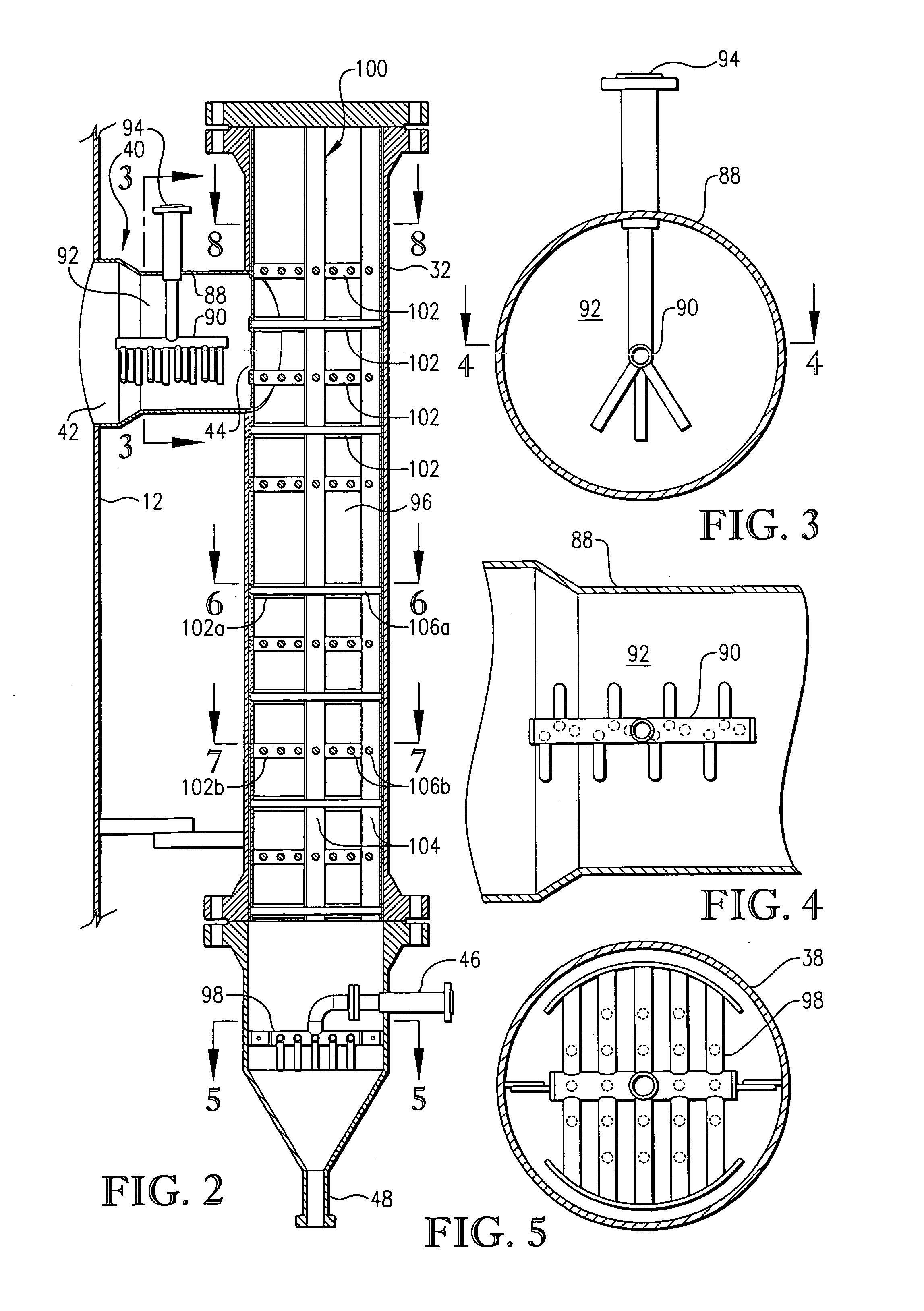Desulfurization process
a desulfurization process and desulfurization technology, applied in separation processes, combustible gas purification/modification, furnaces, etc., can solve the problems of large cost in hydrogen consumption, high sulfur content in such automotive fuels, and reduced octane number, so as to minimize the attrition of solid particles, minimize the capital cost, and minimize the effect of capital cos
- Summary
- Abstract
- Description
- Claims
- Application Information
AI Technical Summary
Benefits of technology
Problems solved by technology
Method used
Image
Examples
Embodiment Construction
[0032]Referring initially to FIG. 1, a desulfurization unit 10 is illustrated as generally comprising a fluidized bed reactor 12, a fluidized bed regenerator 14, and a fluidized bed reducer 16. Solid sorbent particles are circulated in desulfurization unit 10 to provide for continuous sulfur removal from a sulfur-containing hydrocarbon, such as cracked-gasoline or diesel fuel, entering desulfurization unit 10 via a feed inlet 18. The solid sorbent particles employed in desulfurization unit 10 can be any sufficiently fluidizable, circulatable, and regenerable zinc oxide-based composition having sufficient desulfurization activity and sufficient attrition resistance. A description of such a sorbent composition is provided in U.S. patent application Ser. No. 09 / 580,611, U.S. patent application Ser. No. 10 / 738,141 and U.S. patent application Ser. No. 10 / 072,209, the entirety of all disclosures of which are incorporated herein by reference.
[0033]A hydrocarbon-containing fluid stream ente...
PUM
| Property | Measurement | Unit |
|---|---|---|
| area | aaaaa | aaaaa |
| downward angle | aaaaa | aaaaa |
| angle | aaaaa | aaaaa |
Abstract
Description
Claims
Application Information
 Login to View More
Login to View More - R&D
- Intellectual Property
- Life Sciences
- Materials
- Tech Scout
- Unparalleled Data Quality
- Higher Quality Content
- 60% Fewer Hallucinations
Browse by: Latest US Patents, China's latest patents, Technical Efficacy Thesaurus, Application Domain, Technology Topic, Popular Technical Reports.
© 2025 PatSnap. All rights reserved.Legal|Privacy policy|Modern Slavery Act Transparency Statement|Sitemap|About US| Contact US: help@patsnap.com



